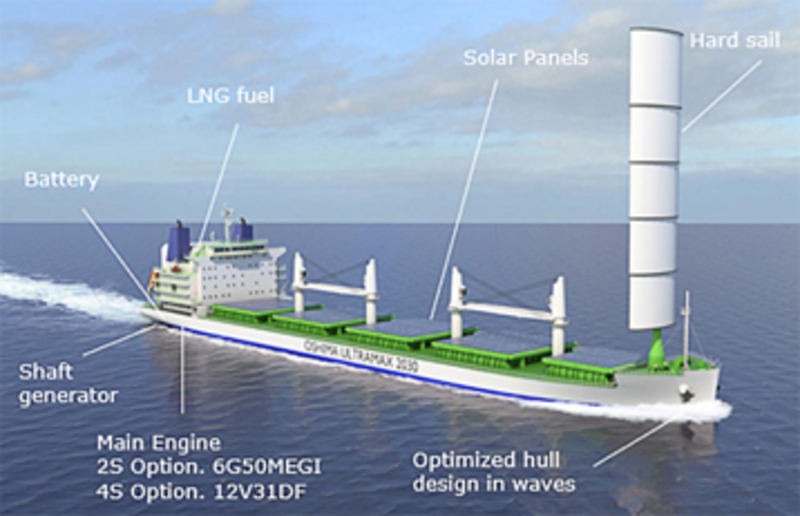
Japan-based ship maker Oshima Shipbuilding and classification society DNV GL have partnered to develop designs for low-emission bulk carriers.
The cooperation has already led to the design of Oshima Ultramax 2030 ship, which is said to reduce Energy Efficiency Design Index (EEDI) by 50%.
The ship was built in collaboration with Finnish marine technology firm Wärtsilä and launched at the Nor-Shipping trade fair in Oslo, Norway.
Encouraged by their earlier success, DNV GL and Oshima Shipbuilding have decided to extend their strategic cooperation until 2030.
They will focus on developing and updating a road map towards the IMO zero emissions scenario. It will be steadily implemented through annual joint industry projects (JIPs) in cooperation with other partners.
Oshima Shipbuilding president Eiichi Hiraga said: “Oshima and DNV GL have already had a close cooperation for many years, resulting in close to 200 ships delivered or on order from Oshima to DNV GL class, and with this strategic agreement we want to extend this cooperation even further.”
The Oshima Ultramax 2030 ship uses LNG as fuel to minimise emissions. It features an optimised hull shape and a sail to produce additional propulsion.
The new ship design provides ultra-low emissions in the port by leveraging solar panels and a battery to meet the hotel load during waiting times and port operations.
DNV GL sales and marketing director Trond Hodne said: “To help the industry meet the ambitious GHG reduction targets set by the IMO, the industry needs to come together to advance ship design, taking advantage of both existing and new technologies.
“This partnership shows how much can come of this approach. The design halves the EEDI of comparable vessels and sets a new standard for low-emission bulk carriers. Our relationship with Oshima stretches back many years and we look forward to continue working together in the future.”



